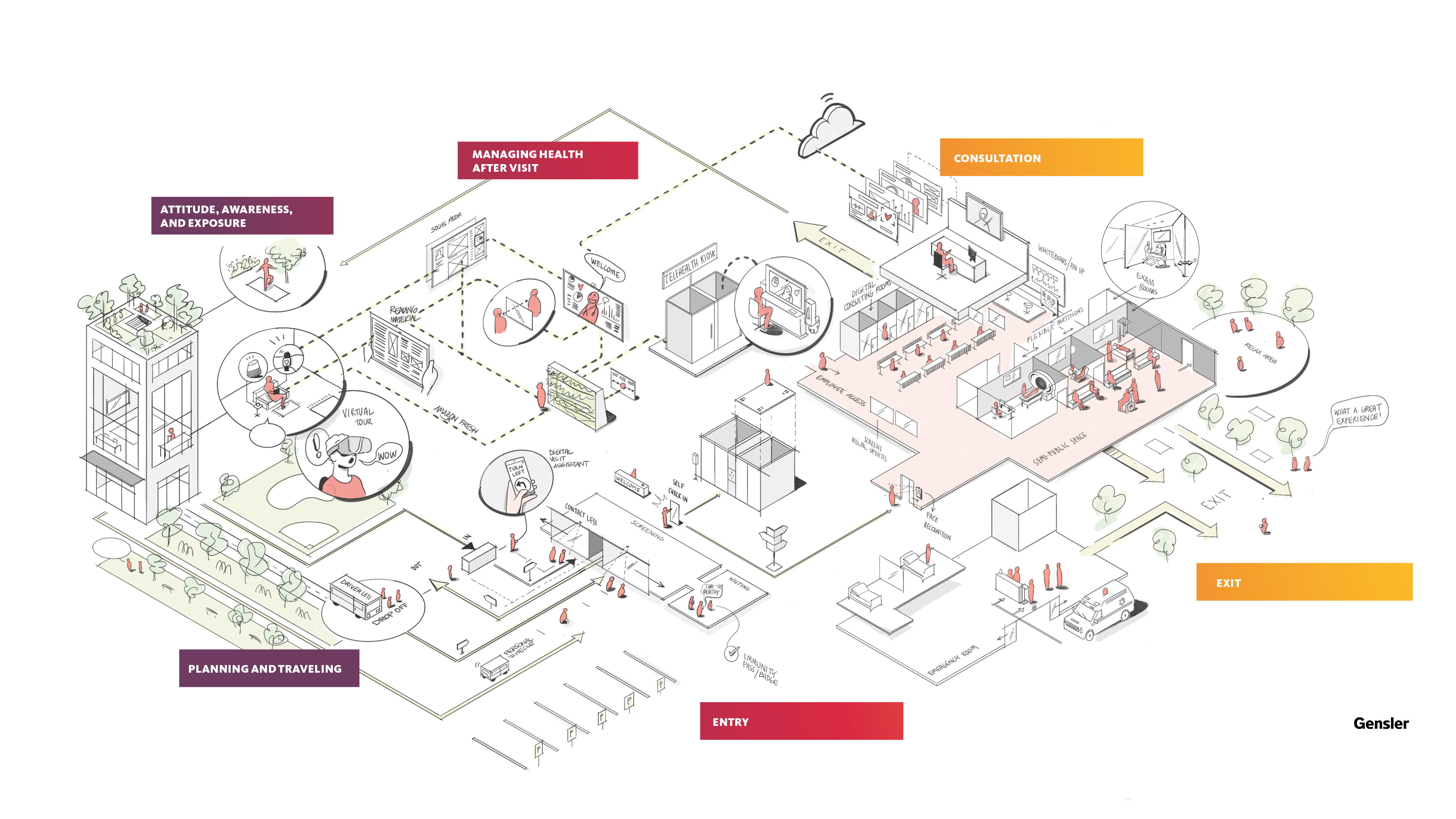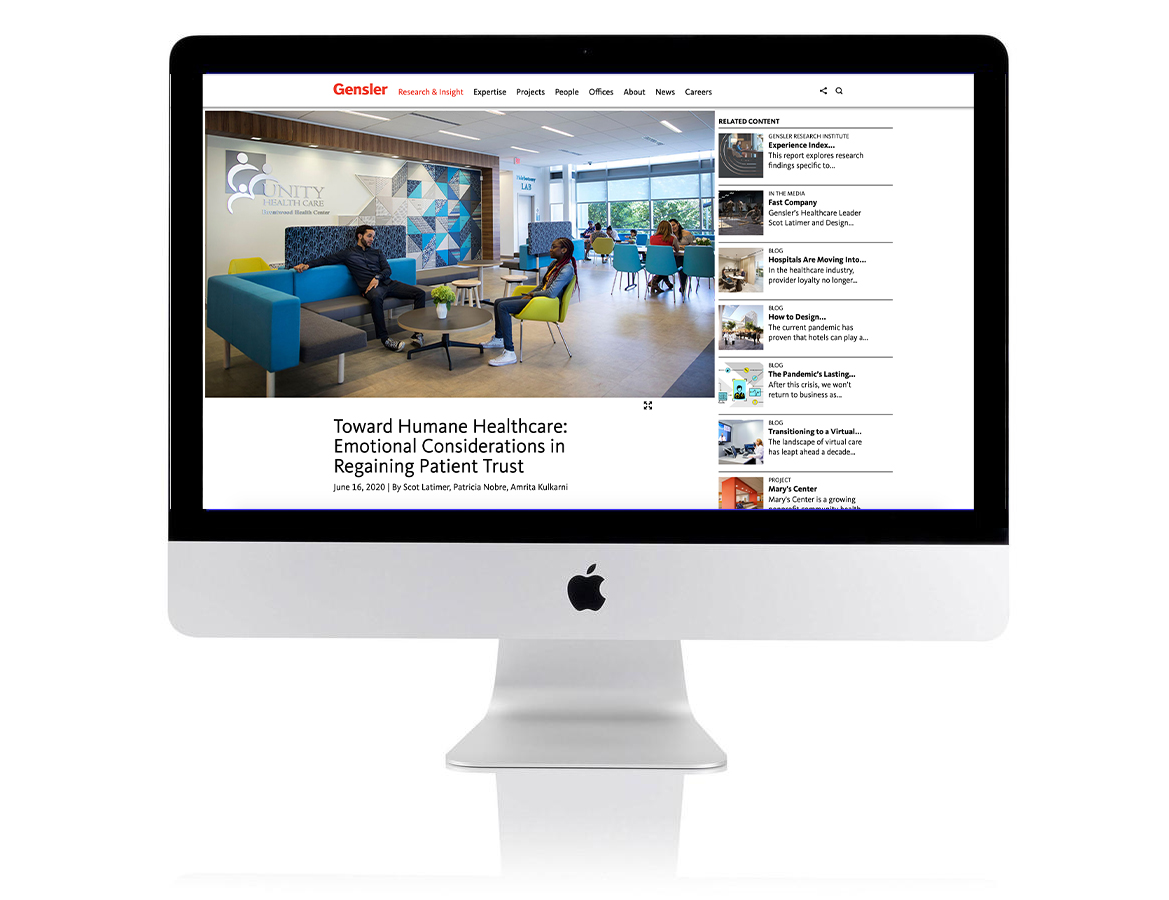Humane Healthcare
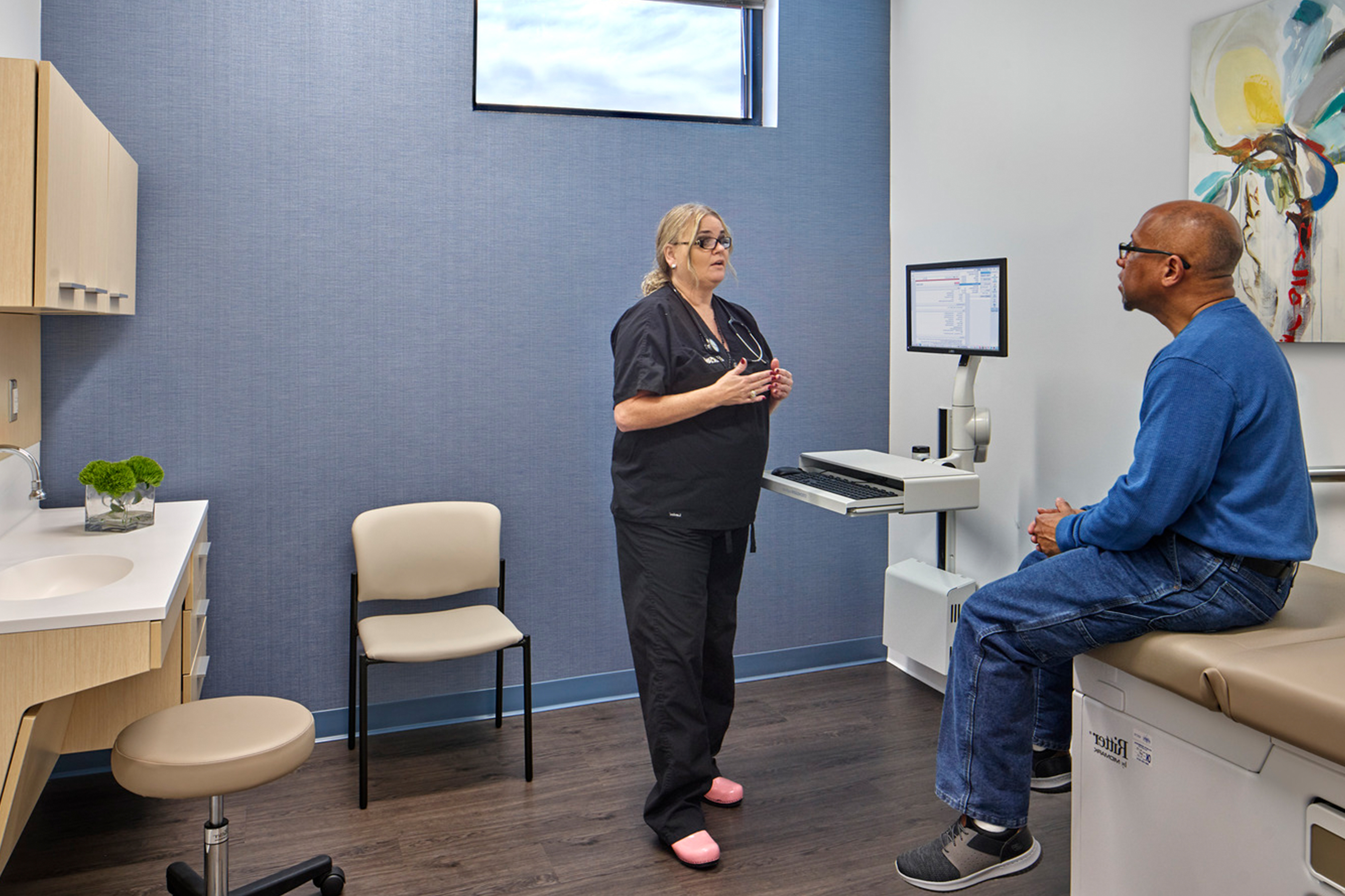
How might healthcare facilities regain patient trust and confidence as we live through the pandemic?
The Missing Conversation
As healthcare facilities grappled to keep up with the unexpected onset of the pandemic, the immediate focus of spatial and operational design has been on facilitating surge capacity, new workflows, and efficiency models.But the emotional toll on the human experience—the strain, fears, trauma, helplessness, and sadness felt by both patients and care givers alike—has been unaddressed. Consequently, ambulatory health is dealing with deficits in patient volumes as people are scared to step into a healthcare facility.
We began with this provocation of a potential unmet need at a fundamentally human level, keen to uncover insight for actionable change during the lockdown.

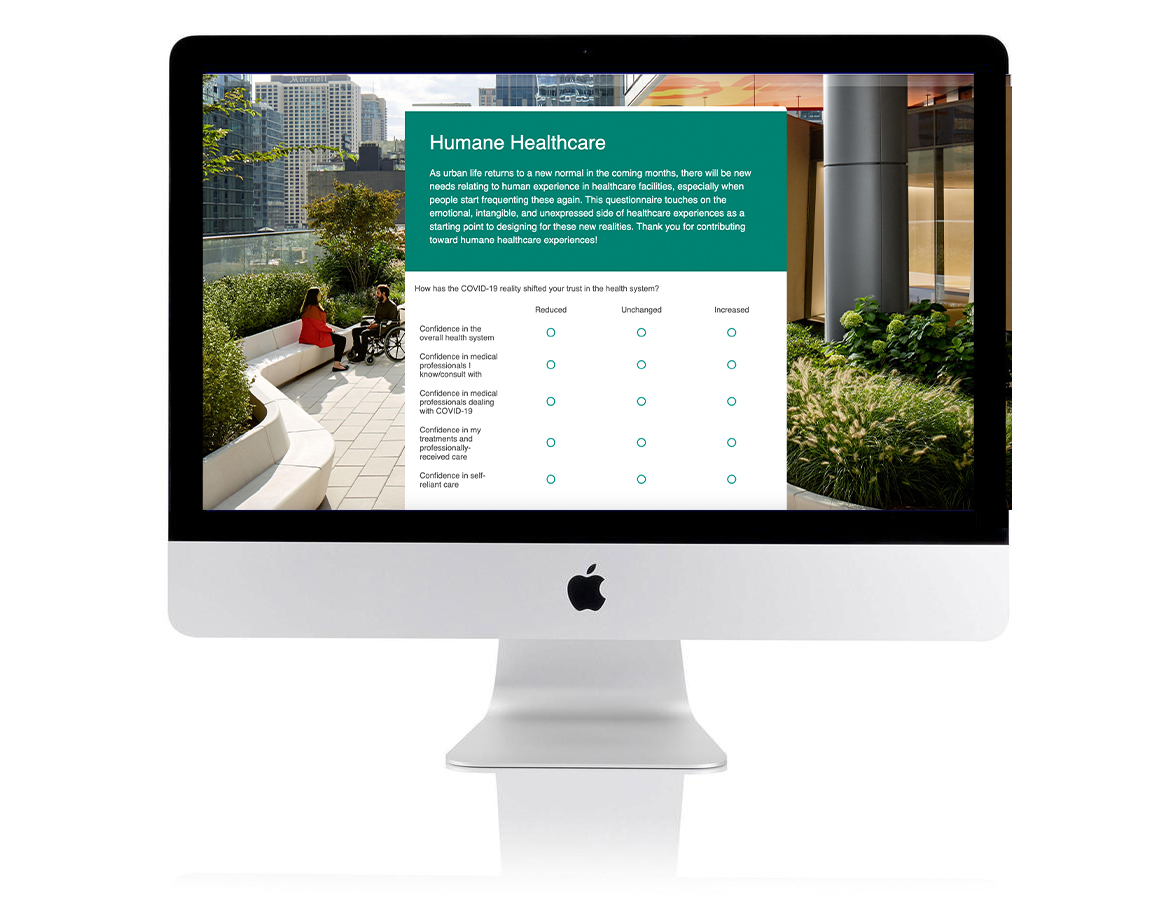
Quantitative Research Tools
With the ongoing lockdown across various cities in the US, we realized that we needed an alternate to our desired contextual and immersive research approach. Deciding to reach out to the internal Gensler network of over 6,000 people, we framed the research through a survey.Generative Approach
Knowing that we were exploring an undefined opportunity or need, the team was keen on a generative, not evaluative approach. This meant that the survey questions focused not on what people wanted in a design solution, but instead on what people did, how they felt, and why they behaved as they did. We included open-ended questions, allowed for contradictions in responses, and pushed respondents to extreme scenarios to capture their reactions—both at individual as well as collective scales.Analysis + Synthesis Setup
Using a traditional tool for an unconventional purpose, we realized that survey responses needed a mixed methods approach to sense-making. In order to expose contradictions, unforeseen issues, and overlooked territories that enable better questions, we began with Dimension Reduction and Principal Components Analyses.We arrived at the four key aspects driving the Humane Healthcare experience: level of committment to emerging processes, ability to take action, type of support needed, and awareness of the big picture.
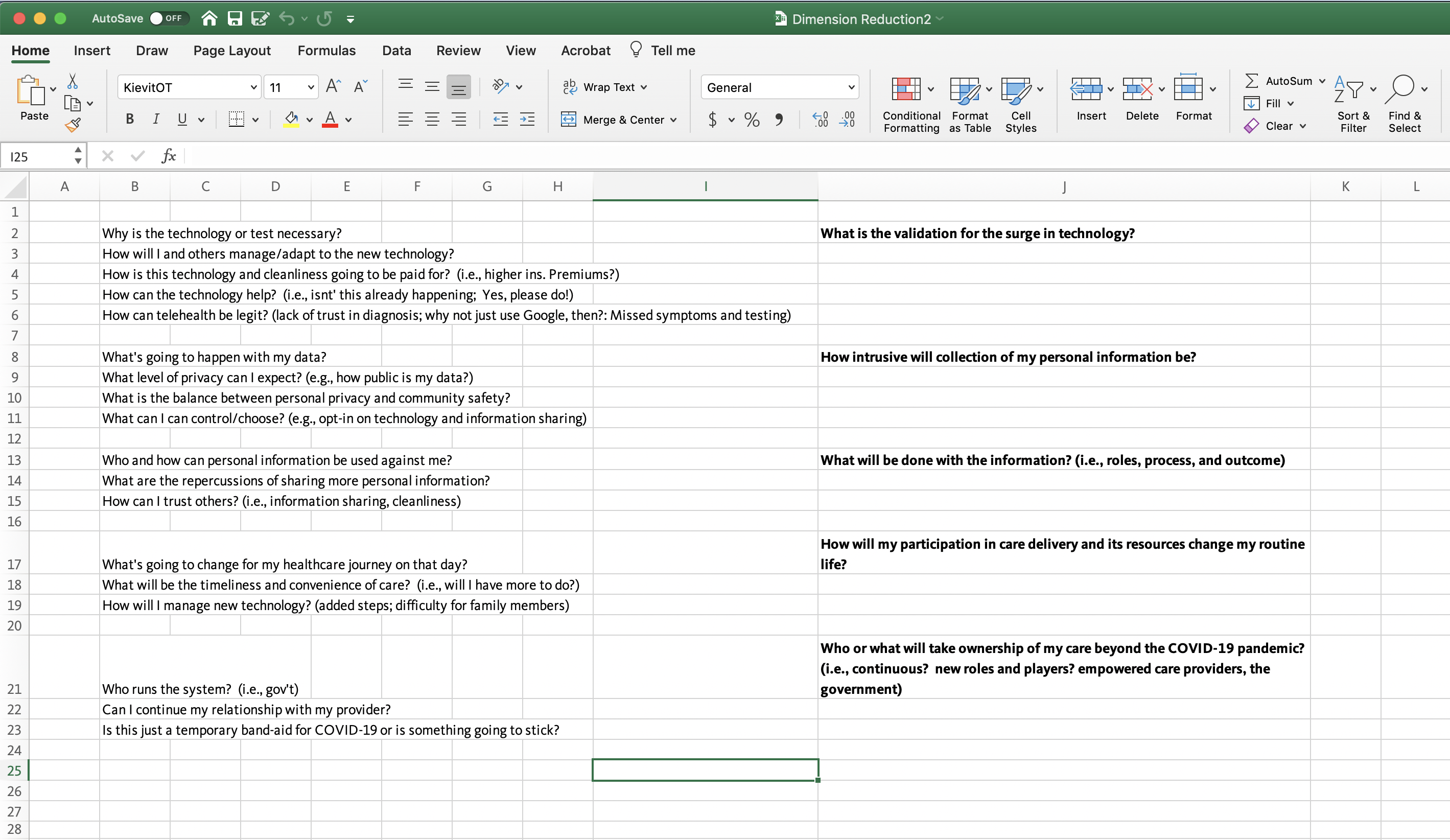
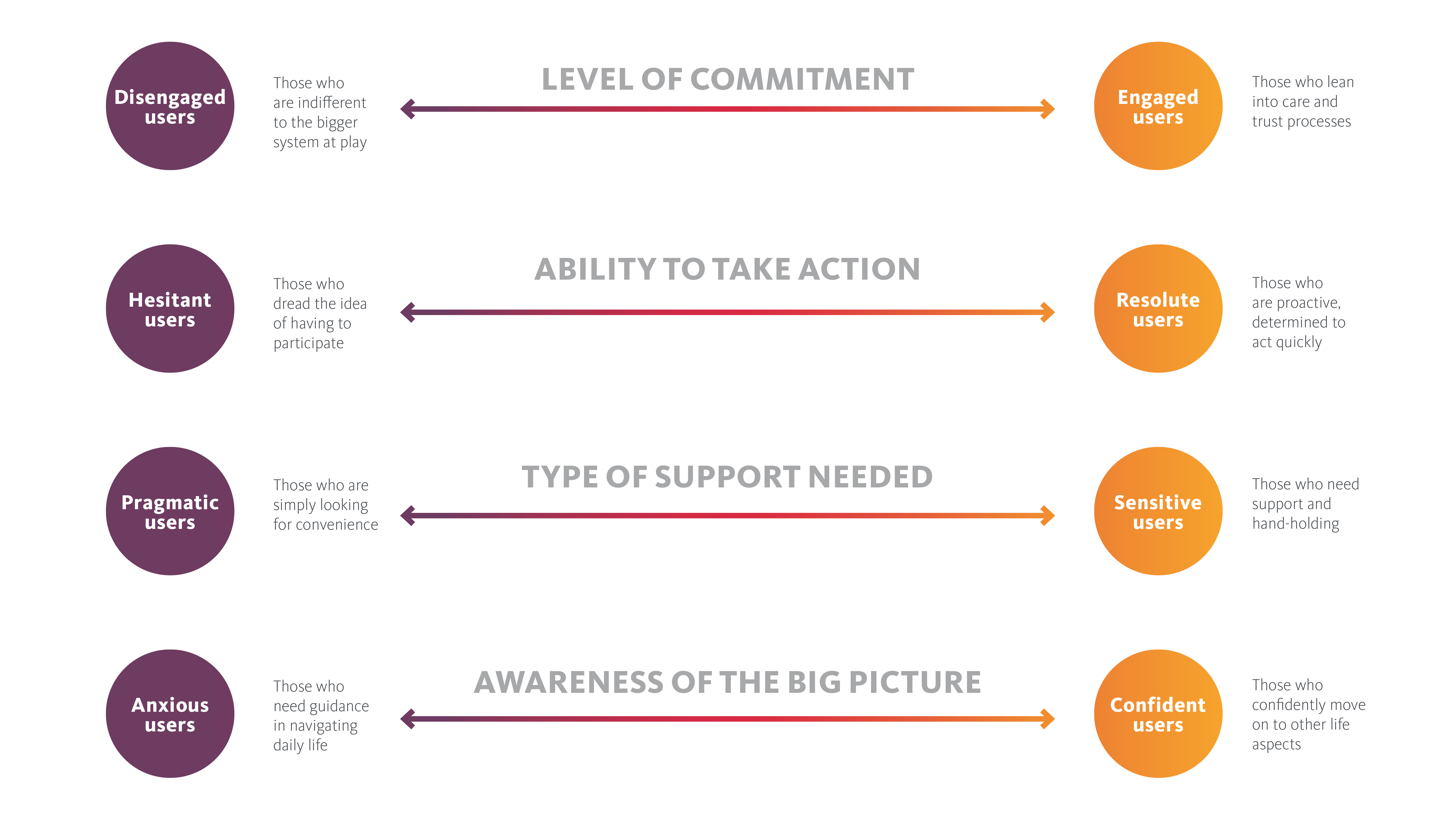

Users are going through various states of
mind as they deal with the pandemic
mind as they deal with the pandemic
User Personas
Synthesizing the meaning behind the four aspects of the human experience, we defined eight user personas, or rather, user states of mind, at the extremes of each spectrum. Mapping these onto an extended user journey—one that begins well before the need for a facility visit, and ends well after it—gave us directives for design action.Design for Multiplicity and Inclusivity
By meeting users at their current state of mind, design interventions took on an inclusive philisophy, designing for choice across the journey experience. In doing so, we uncovered nuanced opportunities for healthcare to expand their impact as well as meaningfully interact with urban realities.
Multidisciplinary and Systemic
Insights from the synthesis directed the team toward a multidisciplinary and systemic approach for design. Identifying the interdependency and value of service design, interaction design, product design, and spatial design, we framed the opportunity through a systemic lens.POV Publication
We published our findings as a blogpost to share the message and provocation. The hope is to inspire human-centered design across the health and wellness spectrum through our thought-leadership and guidance. Read the blog here.